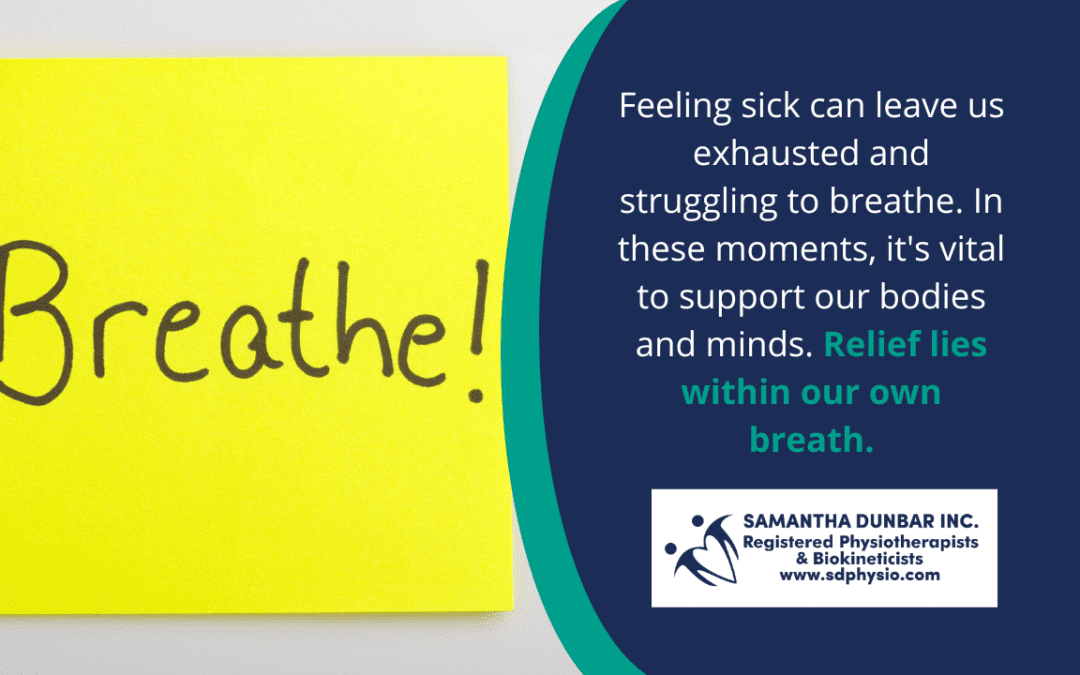Being sick may be challenging, leaving us exhausted, congested, and unable to catch our breath. In these moments of vulnerability, we must discover ways to support our bodies and brains, gently leading them back to balance and well-being. Despite the discomfort and fatigue that disease causes, there is a place of relief within our own breath. Using the intrinsic power of our respiratory system, we can begin on a path of self-care and renewal. We can access a source of comfort and strength through mindful breathing techniques, relieving both the body and the soul.
Breathing exercises, also known as breathing techniques or breathwork, are intentional methods that control and manipulate the breath for a variety of benefits, including relaxation, stress reduction, increased attention, and overall well-being. These exercises usually include precise breathing patterns, rhythms, and strategies to influence the body’s physiological and psychological state.
Breathing exercises are essential for both physical and mental health. Here’s why they’re important:
- Stress reduction – Deep breathing activates the body’s relaxation response, which reduces stress chemicals such as cortisol. This relaxes the mind and body, giving a sense of serenity and calmness.
- Improved lung function – Regular breathing exercises help strengthen the respiratory muscles and expand the lung capacity. This improves blood oxygenation and general respiratory health.
- Enhanced focus and concentration – Deep, controlled breathing might help you calm your thoughts and improve concentration. Breathing exercises can improve cognitive performance and productivity by increasing oxygen flow to the brain.
- Better sleep – Use relaxation techniques such as breathing exercises to improve your sleep quality before bed. Deep breathing relaxes the body and mind, making it simpler to fall asleep and stay asleep all night.
- Reduced anxiety and depression – Deep breathing supports the parasympathetic nervous system, which controls the body’s rest and relaxation response. This can help decrease anxiety and depression symptoms.
- Improved digestion—Deep breathing can stimulate the vagus nerve, which is essential for the digestive system to work properly. Breathing techniques that promote relaxation and reduce tension can help with digestive disorders like bloating and indigestion.
- Pain management – Deep breathing can help relieve pain by stimulating the production of endorphins, the body’s natural pain relievers. It also helps to relax stiff muscles and promotes overall relaxation, which reduces pain perception.
- Enhanced athletic performance—To achieve peak performance, Athletes must use proper breathing techniques. Deep breathing increases oxygen delivery to the muscles, boosts endurance, and improves overall athletic performance.
Common types of breathing exercises:
- Diaphragmatic breathing (Deep breathing) entails breathing deeply into the abdomen rather than shallowly into the chest. Inhale deeply through your nose, expand your abdomen, and gently exhale through your mouth, allowing it to contract. This engages the diaphragm and promotes relaxation.
- Equal breathing – This technique involves inhaling and exhaling for an equal count. For example, take a four-count inhale and exhale. This can help to regulate the neurological system and relax the mind.
- 4-7-8 breathing – In this technique, you inhale for four counts, hold your breath for seven counts, and then exhale for eight counts. It is thought to be good for relaxation and can help with falling asleep.
- Alternate nostril breathing – This yoga breathing technique consists of closing one nostril at a time while inhaling and exhaling through the other. It regulates the body’s energy channels and improves mental alertness.
- Box Breathing (Square Breathing) – This method involves inhaling for a count, holding the breath for the same count, exhaling for the same count, and then repeating the cycle. For example, inhale for four counts, hold for four counts, exhale for four counts, hold for four counts, and then repeat. This can help to regulate breathing and alleviate tension.
- Resonant breathing – This involves breathing at a specific rate, usually about six breaths per minute, which is said to synchronize the heart and respiratory rhythms, resulting in a condition of coherence and relaxation.
Incorporating breathing exercises into your regular routine requires little time or effort, but the benefits can be remarkable. Whether used as part of a mindfulness regimen, during yoga or meditation, or just throughout the day during times of stress or tension, these activities can bring a sense of peace and balance in an increasingly chaotic environment.
Breathing is something we all do automatically, but by bringing conscious awareness to it and harnessing its power, we may tap into a natural source of healing and vitality. So, take a deep breath, exhale slowly, and begin your journey of self-discovery and well-being with the simple act of breathing.













